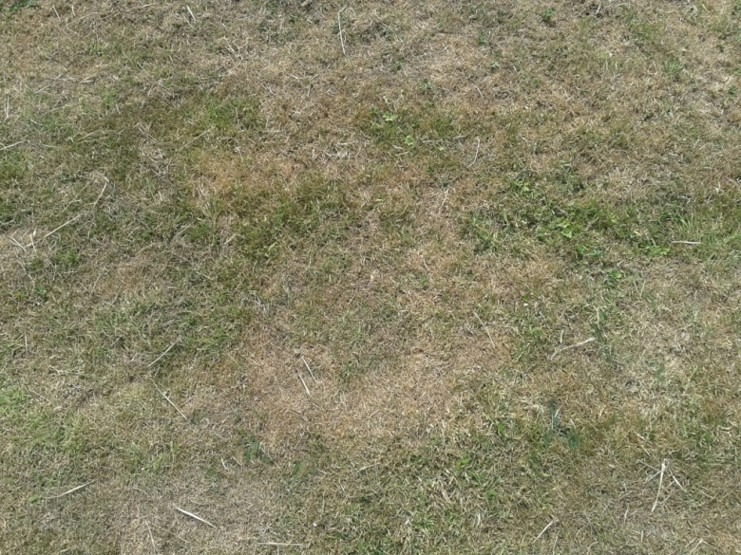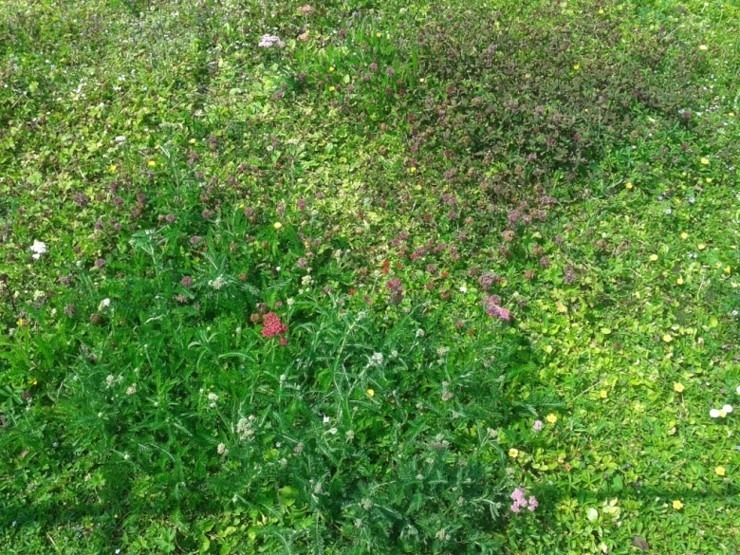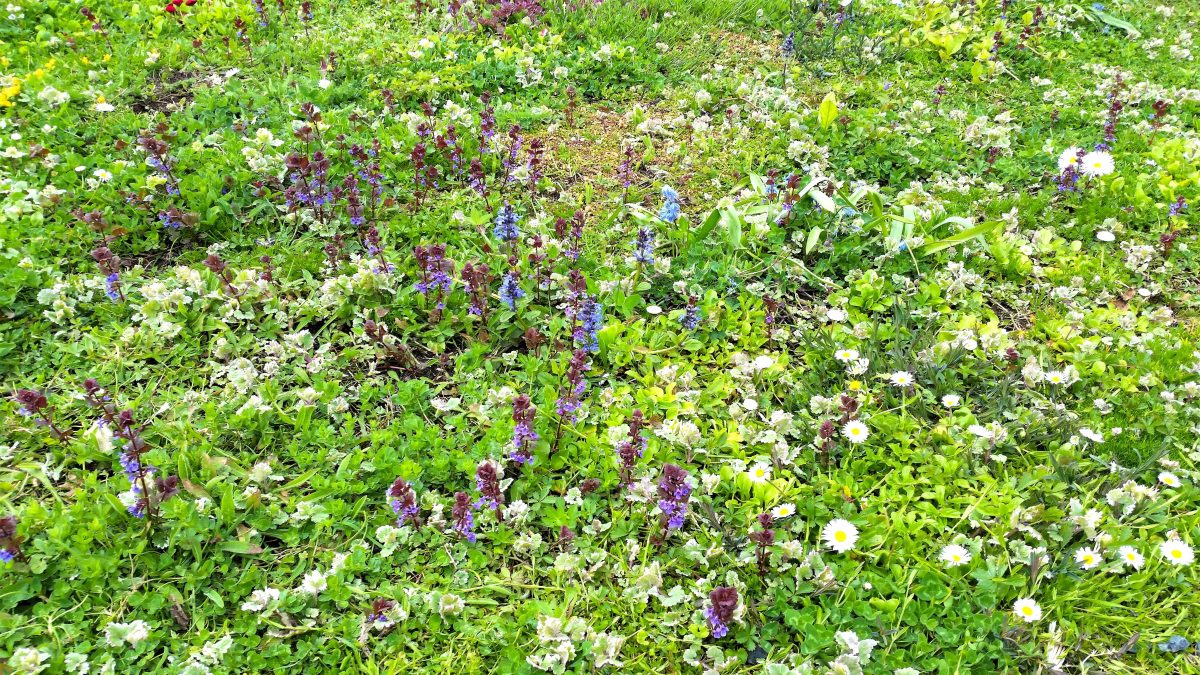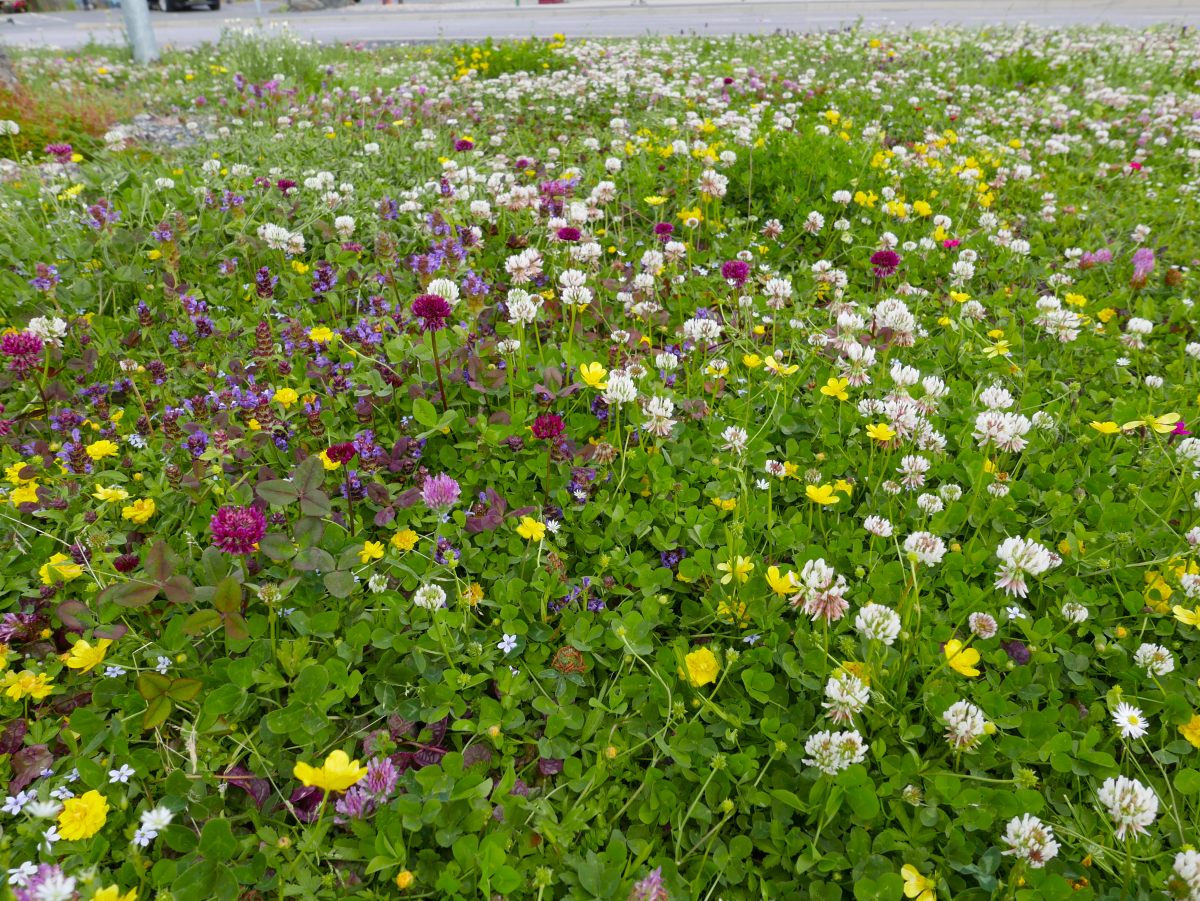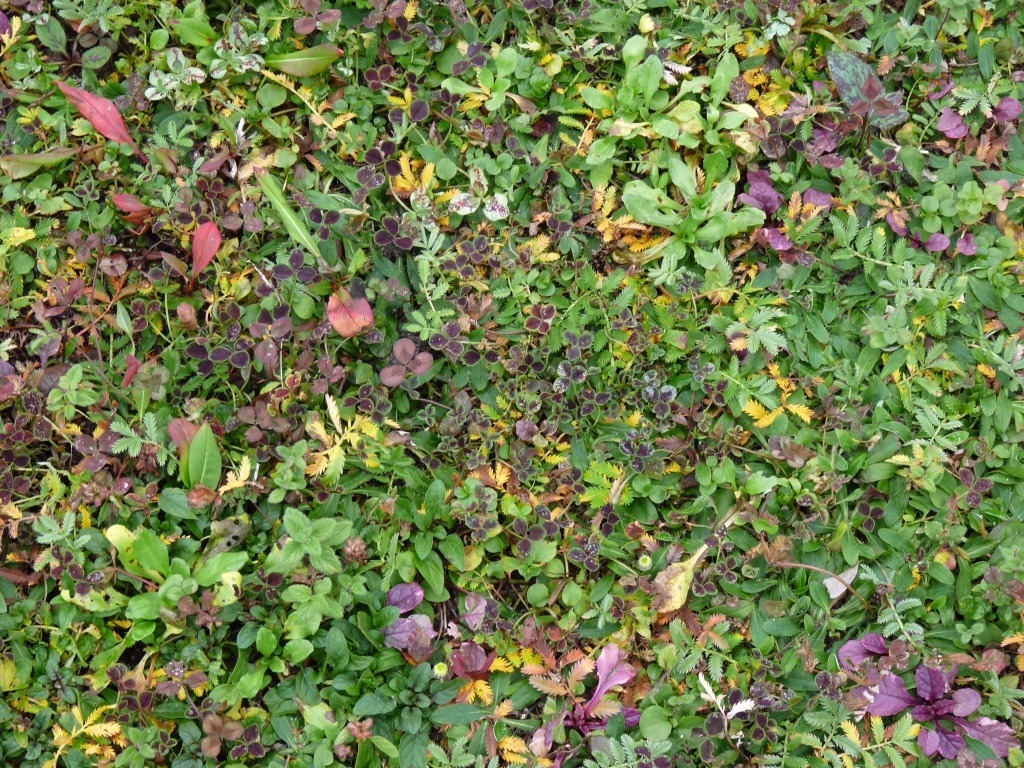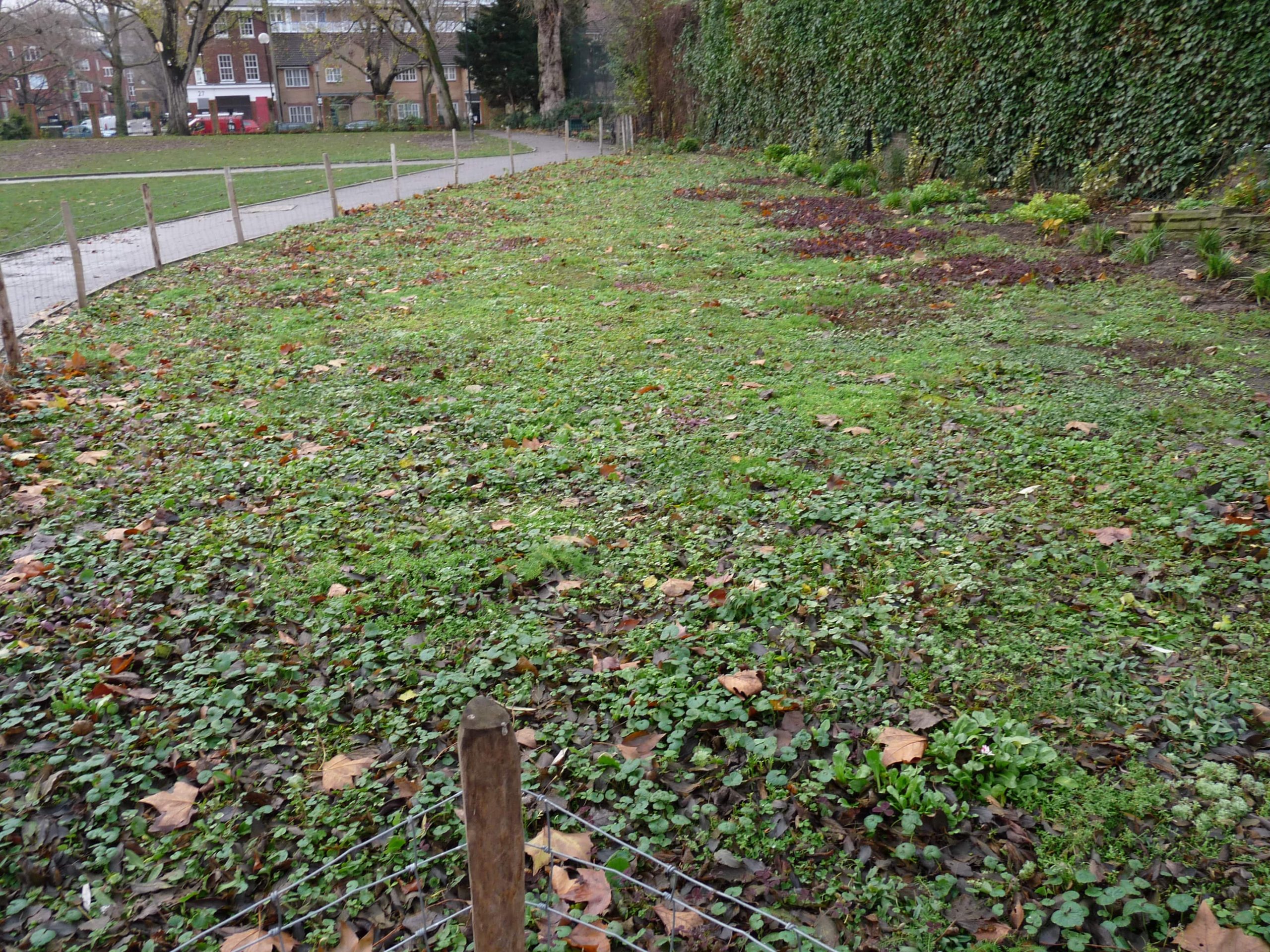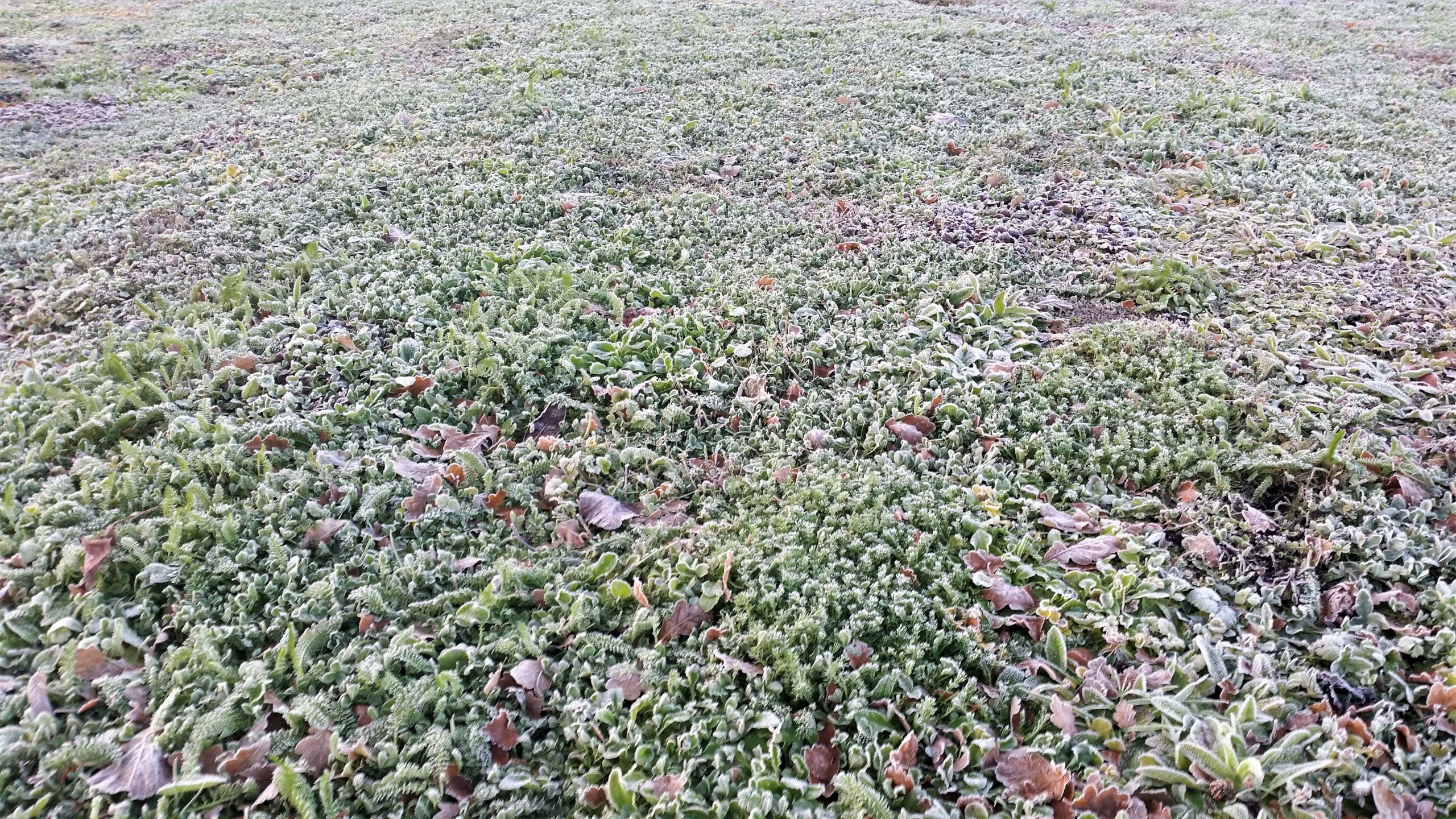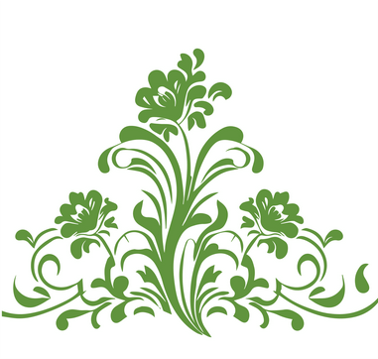Grass lawns generally look similar no matter what the season, certainly until the weather gets hot and dry and the grasses brown and naturally die back into summer dormancy; something increasingly more likely with climatic change.
Being composed of forbs, T-lawns can look different in different seasons and tend not to die back so obviously in hot dry summer weather.
T-lawn forbs do not experience dormancy in the same way and continue to provide a predominantly green lawn for longer.
It was this lawn behaviour back in the unusually hot and drought-hit summer of 1976 that was highly influential in the development of T-lawns.
May 2025 clearly demonstrates how many lawn forbs can stay green in dry lawns much longer than most lawn grasses.
Unlike grass lawns, T-lawns show seasonality. They can also be enhanced with early flowering bulbs and corms such as snowdrops, Crocus and Siberian squill, and later in the year with Oxalis and autumn crocus.

